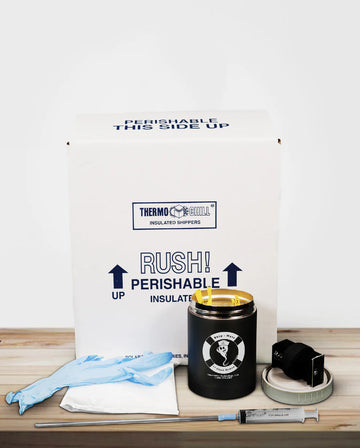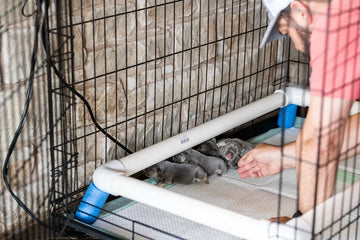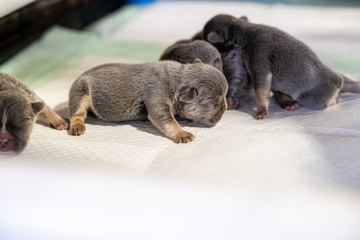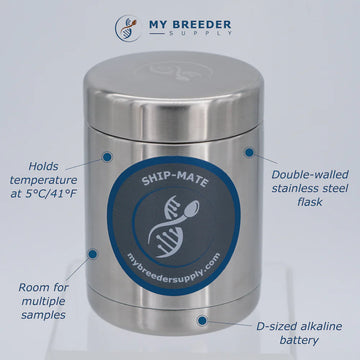
Parvovirus in dogs, commonly known as Parvo, is a highly contagious viral illness that poses a significant health risk, particularly to puppies and unvaccinated dogs.
Understanding Parvo, its transmission, and its symptoms is critical for dog owners, as early detection can be the difference between life and death for an infected dog.
Early Signs of Parvo in Dogs
In the initial stages, Parvo may be hard to detect. Dogs often exhibit subtle behavioral changes such as lethargy or a slight decrease in playfulness. Physical signs might include a mild fever or a small decrease in appetite.
These early signs are critical and often overlooked, but paying attention to them can lead to early diagnosis and treatment.
Key Symptoms of Parvo
As the virus progresses, the symptoms become more severe and noticeable. The most common and alarming signs include:
- Severe Diarrhea: Often bloody and very foul-smelling.
- Vomiting: Persistent and can lead to dehydration.
- Loss of Appetite: Dogs may refuse food due to nausea.
- High Fever: Indicates the body’s struggle to fight the infection.
Secondary Symptoms and Complications
As the disease progresses, dogs may develop secondary symptoms which can be just as dangerous as the primary symptoms. These include:
- Dehydration: Due to persistent vomiting and diarrhea.
- Weakness and Lethargy: As a result of the loss of nutrients and dehydration.
- Abdominal Pain: Indicated by a dog’s reluctance to eat or discomfort when touched.
Understanding the Severity of Symptoms
Understanding the severity of these symptoms is crucial. If a dog shows any of these signs, especially in combination, immediate veterinary attention is necessary.
Early treatment significantly improves the chances of recovery. Ignoring these symptoms can lead to rapid deterioration of the dog's health.
At Home Parvo Tests
Getting at home parvo test kits can provide you with easy access to testing and is a cost effective way to monitor your puppies health.
Diagnosing Parvo in Dogs
Diagnosis is typically made through a combination of clinical signs and diagnostic tests, which may include stool samples, blood tests, and more.
The veterinarian will assess the dog's condition and decide the best course of action based on the severity of the symptoms.
Treatment Options for Parvo
Treatment for Parvo is intensive and often requires hospitalization. It includes supportive care like intravenous fluids to combat dehydration, medications to control vomiting and diarrhea, and antibiotics to prevent secondary infections.
In some cases, home care may be appropriate, but this should always be under the guidance of a veterinarian.
Preventing Parvo in Dogs
Prevention is key in combating Parvo. The most effective way to prevent Parvo is through vaccination. Puppies should receive their first vaccines at 6-8 weeks of age, with booster shots following thereafter.
Good hygiene practices, such as cleaning and disinfecting dog areas and equipment, are also important, as is isolating infected dogs to prevent the spread of the virus.
Recovery and Aftercare
Recovery from Parvo can be a slow process, and dogs may need continued care even after they return home. It's important to follow the veterinarian's instructions regarding diet, medication, and rest.
Some dogs may suffer long-term effects from the illness, such as intestinal problems or a weakened immune system, and require ongoing care.
Parvo is a serious, life-threatening illness in dogs, but with prompt and appropriate care, many dogs can recover. Awareness of the symptoms, early veterinary intervention, and proper care are essential.
Vaccination and hygiene practices play a crucial role in preventing the spread of Parvo, and ensuring the health and well-being of our canine companions.
Frequently Asked Questions About Canine Parvovirus Symptoms
What are the first signs of Parvo in dogs?
The earliest signs of Parvo can include lethargy, a slight decrease in appetite, and a mild fever. These symptoms might not be very pronounced but are crucial for early detection.
How is Parvo transmitted among dogs?
Parvo is highly contagious and is primarily transmitted through direct contact with an infected dog or indirectly through contact with contaminated surfaces, feces, or even human hands and clothing.
Can Parvo be treated at home?
While mild cases may sometimes be managed at home under strict veterinary guidance, most cases of Parvo require intensive medical treatment, often involving hospitalization. Home care alone is generally not sufficient due to the severity of the symptoms and the risk of complications.
How long does it take for a dog to recover from Parvo?
Recovery time can vary, but it typically takes about 5-10 days for a dog to start showing signs of recovery after beginning treatment. Complete recovery might take longer, depending on the severity of the disease and the dog's overall health.
Can a dog get Parvo even after being vaccinated?
While rare, it is possible for a vaccinated dog to get Parvo, especially if the vaccination schedule wasn't fully completed or the vaccine didn't fully take effect. However, vaccination greatly reduces the risk and, if infected, often leads to a milder form of the disease.




